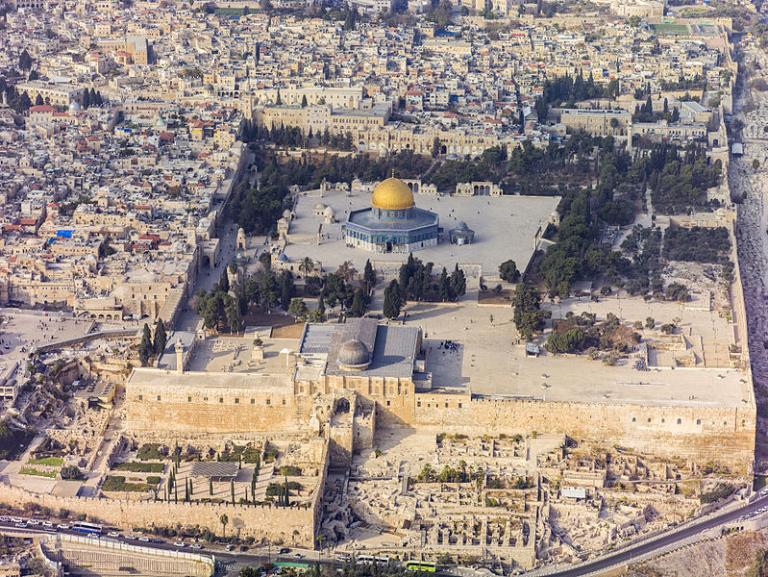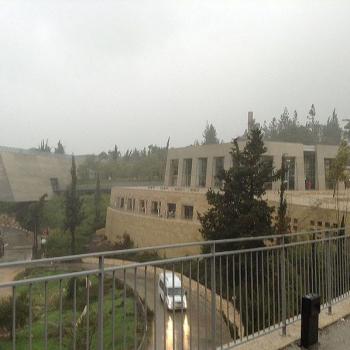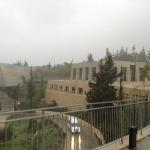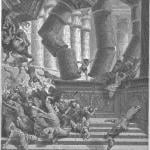
The Dome of the Rock, Al-Aqsa Mosque, and a number of other Islamic buildings have stood on the Herod’s Temple platform since the late AD 690s. But there is literally no trace of the Temple itself. The Romans did their laborious job exceedingly well; not one stone of the Temple remained standing upon another. The prophecy was fulfilled. The Mount was broad and clear, which is why, after the Arab conquest, it was such a good (and obvious) place to build important structures.
The book must go on:
Another development that needs to be achieved, as most Latter- day Saints know, is the construction of a temple in Jerusalem. The prophet Ezekiel saw a vision of a great latter-day temple and its rituals and recorded that vision in chapters 40-47. Joseph Smith taught that, although the entire law of Moses would not be restored, the rituals of sacrifice would be restored and carried out in that temple at Jerusalem.[1] Little more than a year prior to his death, at the April 1843 general conference, Joseph prophesied that
Judah must return, Jerusalem must be rebuilt, and the temple, and water come out from under the temple, and the waters of the Dead Sea be healed. It will take some time to rebuild the walls of the city and the temple …and all this must be done before the Son of Man will make His appearance.[2]
Two months later, on 11 June 1843, the Prophet taught a very important historical principle to the Saints at Nauvoo, one that has application to the future as well. “What was the object,” he asked,
of gathering the Jews, or the people of God in any age of the world?… The main object was to build unto the Lord a house whereby He could reveal unto His people the ordinances of His house and the glories of His kingdom, and teach the people the way of salvation; for there are certain ordinances and principles that, when they are taught and practiced, must be done in a place or house built for that purpose. It was the design of the councils of heaven before the world was, that the principles and laws of the priesthood should be predicated upon the gathering of the people in every age of the world.[3]
What kind of a temple will this be? That question is closely linked to the question of precisely who will participate in its construction. “Who do you think is going to build it?” Elder Orson Pratt asked at a special conference in Logan in 1877. “You may think that it will be the unbelieving Jews who rejected the Savior.” However, Elder Pratt could not accept that notion. “The Temple at Jerusalem will undoubtedly be built,” he declared, “by those who believe in the true Messiah.”[4] Certainly we can conclude that valid and authorized ordinances revealed in connection with the restored gospel will be practiced there, since Jerusalem is one of the places designated in the Doctrine and Covenants for the performance of vicarious baptisms for the dead.[5]
[1] See History of the Church 4:211-12.
[2] History of the Church 5:337. The prophecy of the healing of the waters of the Dead Sea echoes that of Ezekiel 47:1-10. Incidentally, the very ancient notion that the waters of life are to be found at the base of the mountain of the Lord’s house reappears in the location of baptismal fonts in or near the basements of Latter-day Saint temples.
[3] History of the Church 5:423.
[4] Journal of Discourses 19:20
[5] Doctrine and Covenants 124:36.
Posted from Newport Beach, California











